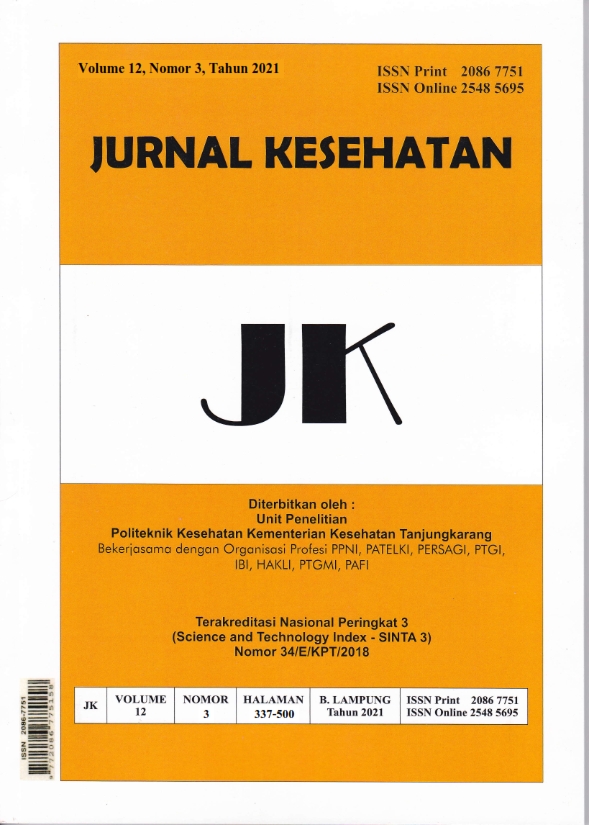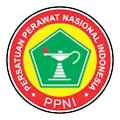Bermain Buku Pop-Up sebagai Terapi Gangguan Mental Emosional Pasca Bencana Tsunami
DOI:
https://doi.org/10.26630/jk.v12i3.2815Keywords:
Children’s emotional mentality, Play therapy, Pop-up books, Tsunami.Abstract
Traumatic experiences can trigger mental-emotional problems in children, especially in disaster conditions. The purpose of this study is to describe mental and emotional problems in children in South Lampung after the Sunda Strait tsunami natural disaster after being given playing therapy with pop-up books. This study uses a quantitative design with quasi-experimental treatment. The population in this study were preschool and school-age children affected by the Sunda Strait tsunami who lived in temporary village shelters in three villages namely Way Muli Timur, Way Muli Barat, and Kunjir as many as 93 children. The mental-emotional state of the child will be measured before and after therapy. Data collection using the Strength Difficulties Questionnaire questionnaire. The test was conducted using the dependent t-test. The results of data analysis showed that in general the level of strength and difficulty of children was abnormally susceptible (63,4%) at the beginning of the measurement and increased towards normal, in other words, there was an effect of playing therapy with pop-up books on the child's emotional mentality. The results of the bivariate test showed that there was an effect of pop-up books play therapy on children's mental-emotional problems (p-value 0,002). It is recommended that play therapy be combined with other therapies, including consistently to reinforce for children from those closest to them, such as nuclear family and other children's closest people.References
Ali Rahmadian, A., . F., Yusuf L.N, S., Rusmana, N., & L. Downs, L. (2016). Prevalensi Ptsd Dan Karakteristik Gejala Stres Pascatrauma Pada Anak Dan Remaja Korban Bencana Alam. Edusentris, 3(1), 1. https://doi.org/10.17509/edusentris.v3i1.184
Darmiany. (2019). Pgsd Untuk Negeri: Terapi Bermain Sebagai Bentuk Trauma Healing Bagi Anak-Anak Korban Gempa Lombok. Jurnal Pendidikan Dan Pengabdian Masyarakat, 2(2).
Handayani, N., Badi’ah, A., & Ermawan, B. (2017). Pengaruh Terapi Bermain Pop- Up Book Terhadap Kecemasan Preoperatif Menggunakan Anestesi Umum Pada Anak Usia Sekolah Di Rs Pku Muhammadiyah Yogyakarta. Caring : Jurnal Keperawatan, 6(2), 94-105.
https://doi.org/10.29238/caring.v6i2.351
Haryati, S. (2019). Terapi Bermain “Trauma Healing†Dengan Alat Permainan Edukatif (APE) Buatan Sendiri Pasca Gempa Pada Peserta Didik Kelompok TK A Paud Terpadu Putra Kaili Permata Bangsa. Sulawesi Tengah: Best Practice. Perlombaan Penulisan.
Itagaki, S., Ohira, T., Nagai, M., Yasumura, S., Maeda, M., Suzuki, Y., Mashiko, H., Shiga, T., Miura, I., & Yabe, H. (2018). The relationship between sleep time and mental health problems according to the strengths and difficulties questionnaire in children after an earthquake disaster: The Fukushima health management survey. International Journal of Environmental Research and Public Health, 15(4). https://doi.org/10.3390/ijerph15040633
Nawangsih, E. (2016). Play Therapy Untuk anak-anak Korban Bencana Alam Yang Mengalami Trauma (Post Traumatic Stress Disorder/PTSD). Psympathic : Jurnal Ilmiah Psikologi, 1(2), 164-178. https://doi.org/10.15575/psy.v1i2.475
Oktaviana, M., & Wimbarti, S. (2014). Validasi Klinik Strenghts and Difficulties Questionnaire (SDQ) sebagai Instrumen Skrining Gangguan Tingkah Laku. Jurnal Psikologi, 41(1), 101. https://doi.org/10.22146/jpsi.6961
Pramardika, D. D., Hinonaung, J. S. H., & Mahihody, A. J. (2020). Pengaruh Terapi Bermain Terhadap. 7(2), 85-91.
Pramardika, D. D., Siska, J., Hinonaung, H., Mahihody, A. J., & Wuaten, G. A. (2020). Terapi Bermain Sebagai Trauma Healing Pada Anak. 3, 167-172.
Pratiwi, S. A. (2017). Play therapy untuk post traumatic stress disorder pada anak korban bencana. Journal of Chemical Information and Modeling, 31-38.
Purnamasari, I. (2016). Perbedaan reaksi anak dan remaja pasca bencana. Jurnal Penelitian dan Pengabdian Kepada Masyarakat UNSIQ, 3(1), 49-55.
Radityo S, A. N., Utami, D., & Hartanto, F. (2012). Masalah Mental Dan Emosional Pada Siswa SMP Kelas Akselerasi Dan Reguler (Studi Kasus Di SMP Negeri 2 Semarang). Jurnal Kedokteran Diponegoro, 1(1), 107008.
Rahmadian, A. A., Rusmana, N., & Downs, L. L. (2016). Prevalensi PTSD dan Karakteristik Gejala Stres Pascatrauma Pada Anak dan Remaja Korban Bencana Alam. Edusentris, 3(1), 1-17.
Safitri, R. P., Jumadi, J., Romadonika, F., & Adithia, E. (2021). Mencegah Trauma Pasca Bencana Gempa Bumi pada Anak dengan Terapi Rekreasional di Lombok Utara. ADMA: Jurnal Pengabdian dan Pemberdayaan Masyarakat, 2(1), 95-100. https://doi.org/10.30812/adma.v2i1.1265
Salamor, A. M., Salamor, Y. B., & Ubwarin, E. (2020). Trauma Healing Dan Edukasi Perlindungan Anak Pasca Gempa Bagi Anak-Anak Di Desa Waai. Communnity Development Journal, 1(3), 320.
Saputro, H., & Fazrin, I. (2017). Anak Sakit Wajib bermain di Rumah Sakit: penerapan terapi bermain anak sakit; proses, pelaksanaan & manfaatnya. Forum Ilmiah Kesehatan (FORIKES). https://doi.org/978-6021081-44-0
Sherchan, S., Samuel, R., Marahatta, K., Anwar, N., Van Ommeren, M. H., & Ofrin, R. (2017). Post-disaster mental health and psychosocial support: Experience from the 2015 Nepal earthquake. WHO South-East Asia Journal of Public Health, 6(1), 22-29. https://doi.org/10.4103/2224-3151.206160
Thoyibah, Z., Dwidiyanti, M., Mulianingsih, M., Nurmayani, W., & Wiguna, R. I. (2019). Gambaran Dampak Kecemasan dan Gejala Psikologis pada Anak Korban Bencana Gempa Bumi di Lombok. Holistic Nursing and Health Science, 2(1), 31-38. https://doi.org/10.14710/hnhs.2.1.2019.31-38
Downloads
Published
Issue
Section
License
Authors who publish in this journal agree to the following terms:
- Authors retain copyright and grant the journal right of first publication with the work simultaneously licensed under a Creative Commons Attribution License (CC BY-SA 4.0) that allows others to share the work with an acknowledgment of the work's authorship and initial publication in this journal.
- Authors can enter into separate, additional contractual arrangements for the non-exclusive distribution of the journal's published version of the work (e.g., post it to an institutional repository or publish it in a book), with an acknowledgment of its initial publication in this journal.
- Authors are permitted and encouraged to post their work online (e.g., in institutional repositories or on their website) prior to and during the submission process, as this can lead to productive exchanges and earlier and greater citations of published work.












